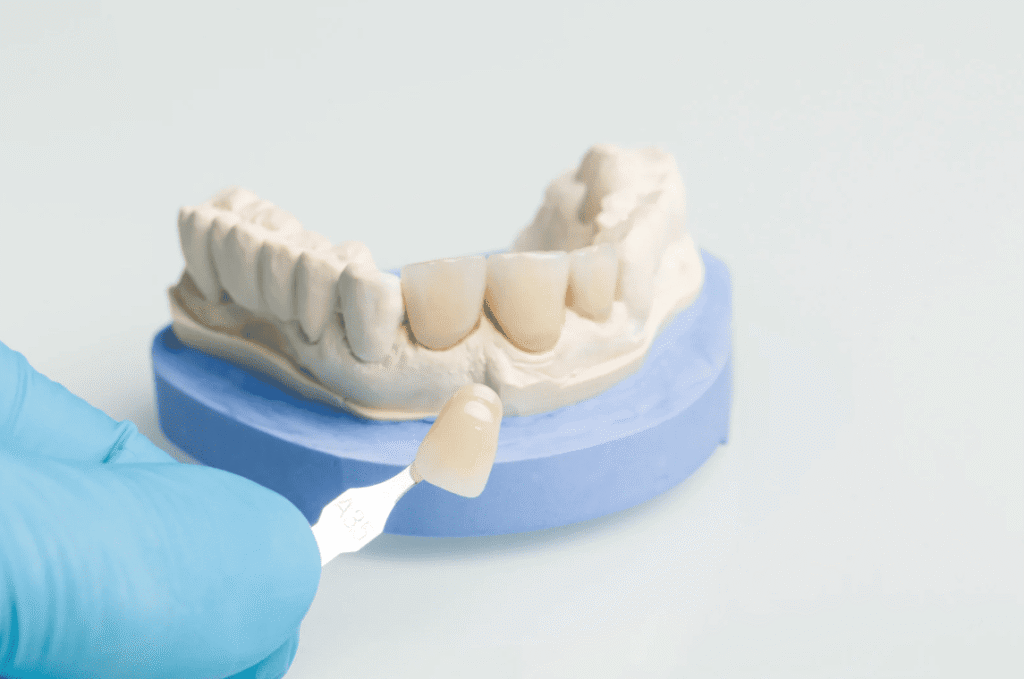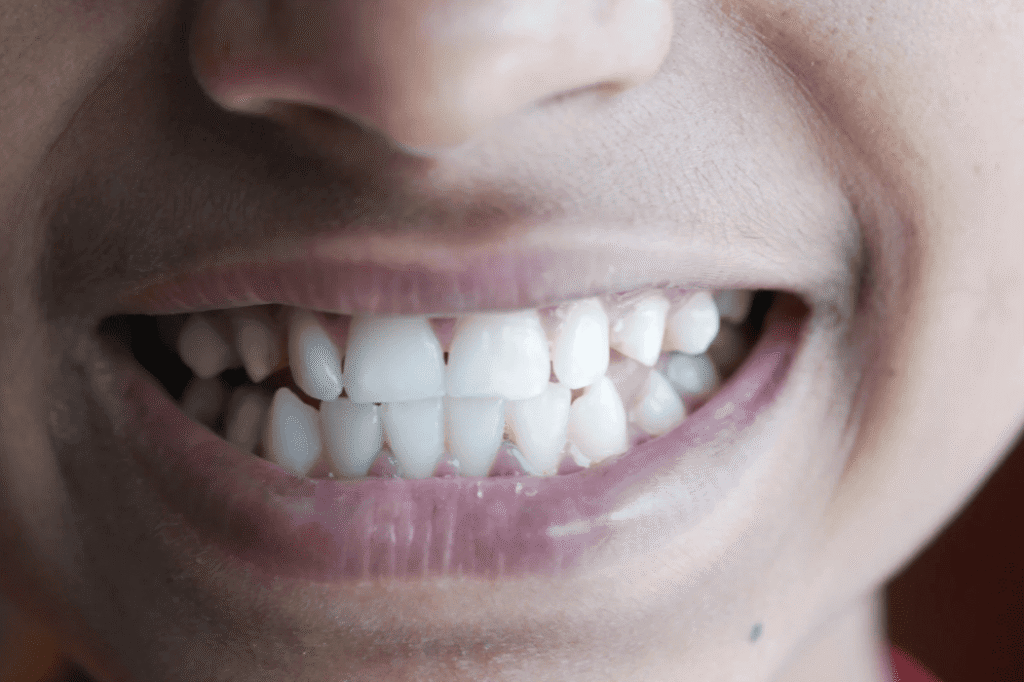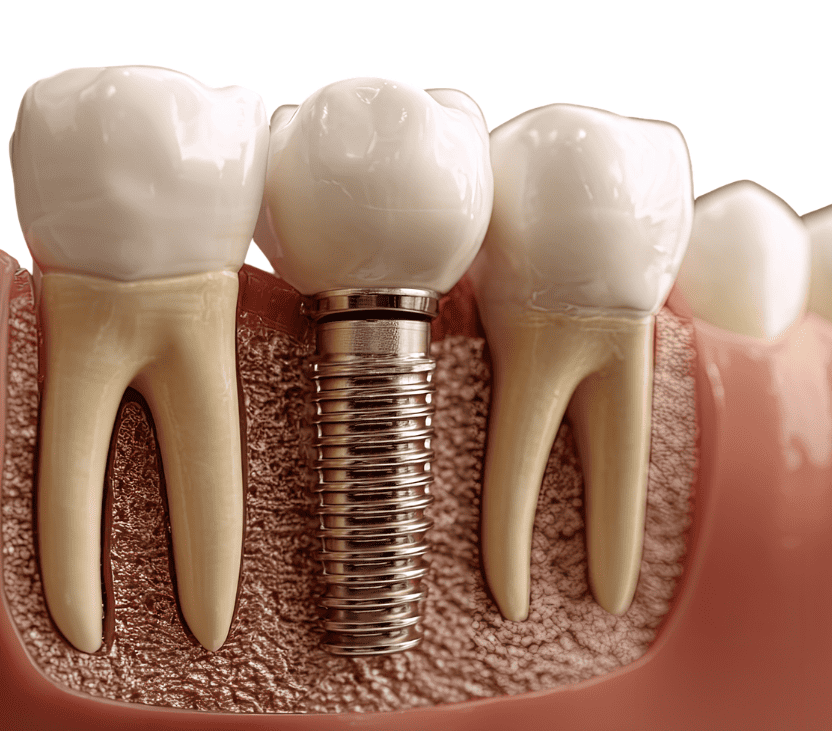
Gum Recession: Causes, Treatments, and Prevention
Gum recession not only affects your smile but may also lead to tooth sensitivity, periodontal disease, and even tooth loss. This article provides a comprehensive explanation of the causes of gum recession, common symptoms, and high-risk groups. It also introduces treatment options to help you find effective solutions.
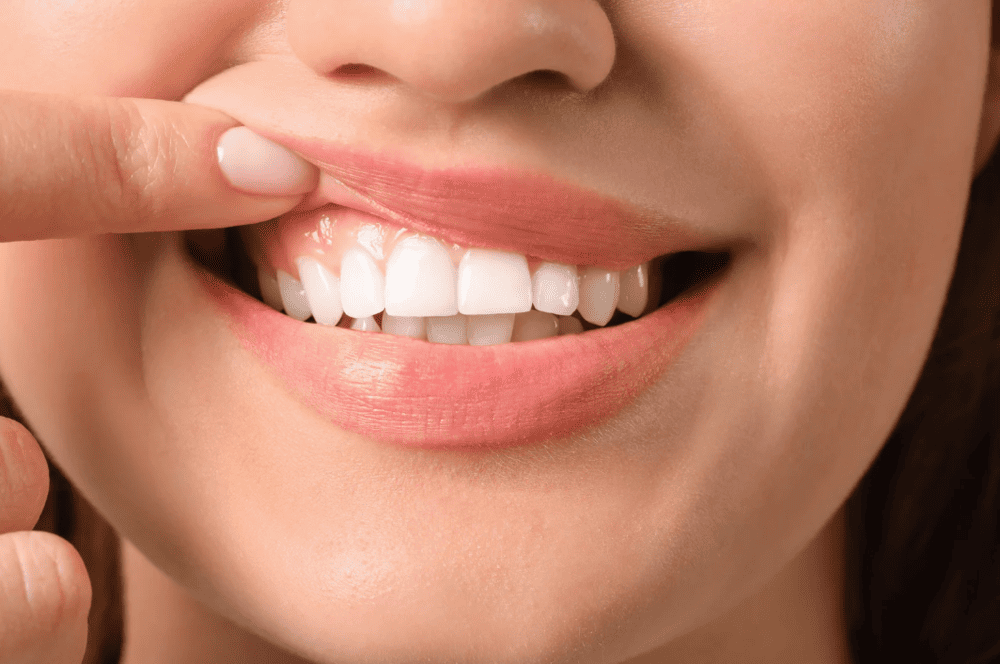
What is Gum Recession?
Gum recession, also known as gingival recession, refers to the gradual wearing away or pulling back of the gum tissue surrounding the teeth, exposing more of the tooth or even the root. This condition not only affects the appearance of your smile but also threatens oral health.
When gums recede, “periodontal pockets” form between the gums and teeth. These pockets can accumulate harmful bacteria, and if left untreated, may cause periodontal disease, bone loss, and eventually tooth loss.
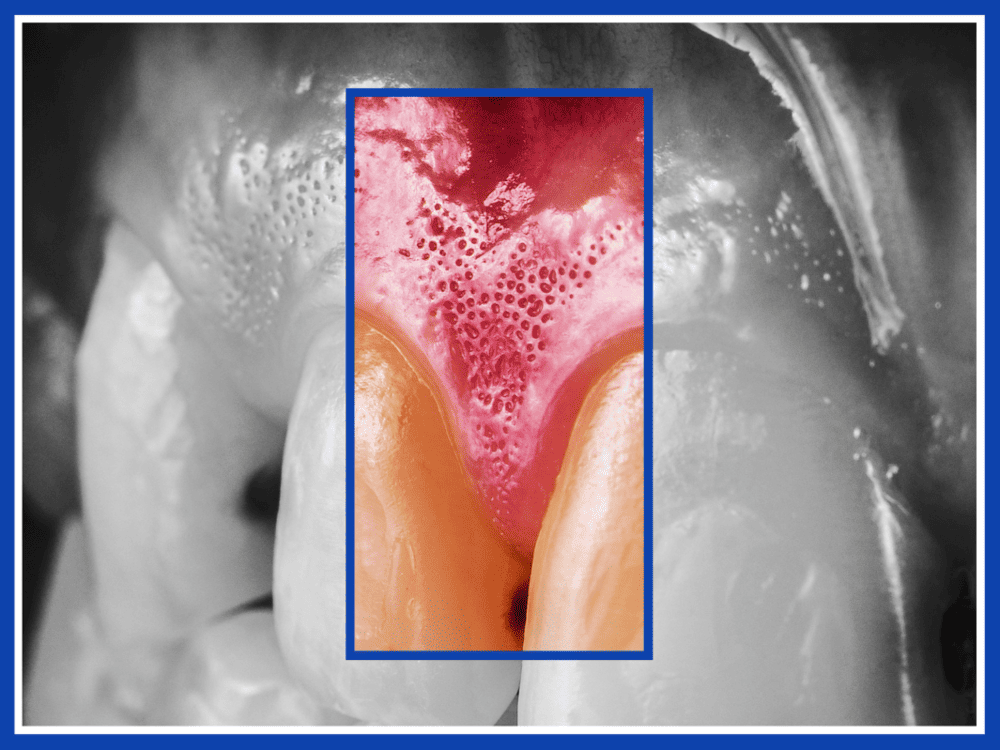
Where are the Gums? (Basic Concept)
The gums are the pink soft tissue in the mouth that surround and protect the teeth. They connect the teeth to the alveolar bone and are one of the most important supporting structures of the teeth. Healthy gums should appear light pink, have a firm texture, and effectively resist bacterial invasion.
Gums are mainly divided into two parts:
- Attached gingiva: Tightly attached to the alveolar bone, providing firm support so that teeth remain stable during chewing.
- Free gingiva: Located at the edge of the tooth, not directly attached to the bone, forming the “gingival sulcus.” Under normal conditions, this groove is shallow, but if deepened by periodontal disease or gum recession, it becomes a place where bacteria accumulate.
👉 Simply put, gums are like the “protective cushion” of your teeth, not only supporting them but also preventing bacteria and external irritation from directly harming the roots and bones.
Safeguard Your Oral Health
At Smith & Jain Dentists, we are committed to delivering professional dental care, from thorough oral examinations to tailored treatments designed for your unique needs. Our expert team provides compassionate guidance throughout your journey to a healthier mouth.
Why Choose Smith & Jain Dentists?
- ✅ Personalized Treatment Plans – Every patient’s oral condition is unique, and we craft targeted solutions to address your specific concerns.
- ✅ Advanced Dental Technology – Utilizing digital diagnostic tools, we ensure precise assessments and effective treatments.
- ✅ Experienced Specialist Team – With extensive expertise, we guarantee top-tier care and swift recovery.
💡 Take the First Step Toward a Pain-Free Mouth! Contact us today to begin your oral health transformation.
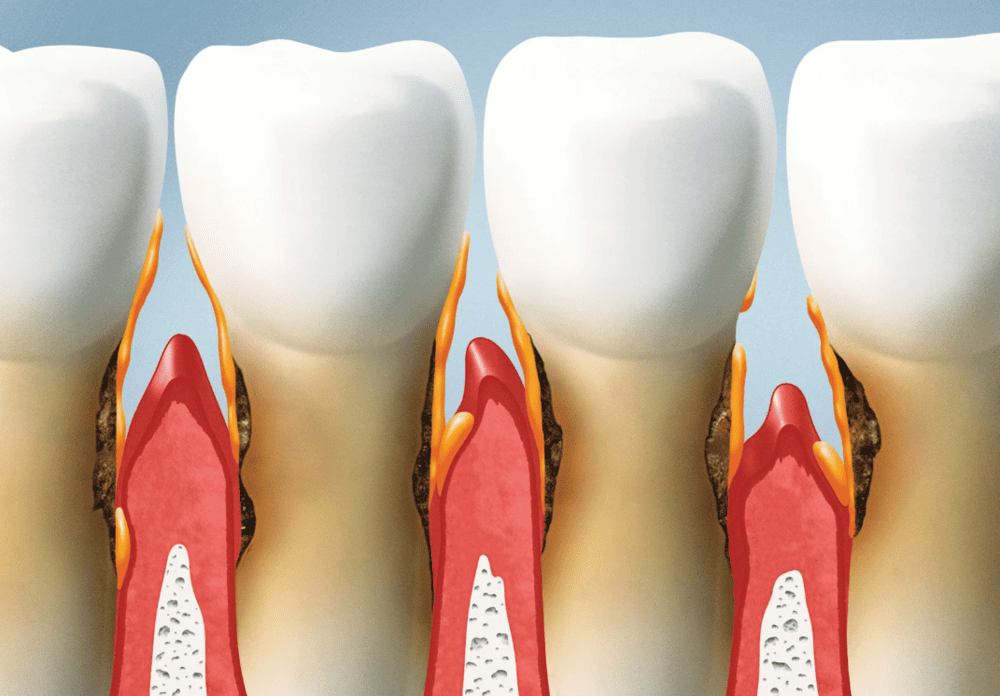
Causes of Gum Recession: Why Are My Gums Receding?
Gum recession does not occur overnight. It is usually the result of long-term influences such as lifestyle habits, oral health issues, and genetic factors. When gum tissue can no longer withstand constant pressure or damage, it gradually recedes, exposing the tooth roots and increasing the risk of tooth sensitivity, periodontal disease, and tooth mobility. The most common causes include:
1. Brushing too hard or using a hard-bristled toothbrush
Many people mistakenly believe that “brushing harder means cleaner teeth,” but in reality, brushing with excessive force or using a hard-bristled toothbrush can wear down the enamel and continuously irritate the gum margins, eventually leading to gum recession.
2. Poor oral hygiene
Without thorough daily brushing and flossing, dental plaque will continue to accumulate and eventually harden into tartar. Tartar forms at the gumline, causing the gums to gradually become inflamed and recede. This is one of the most common culprits behind gum disease and gum recession.
3. Periodontal disease (gum disease)
The leading cause of gum recession in adults is periodontal disease. When bacteria invade the periodontal tissues, they damage both the gums and the supporting alveolar bone, preventing gums from staying tightly attached to the teeth. This forms “periodontal pockets” and ultimately causes continuous gum recession.
4. Teeth grinding or clenching
Habits such as nighttime bruxism or daytime clenching exert excessive pressure on the gums and tooth roots, accelerating gum wear and even causing cracks or sensitivity.
5. Misaligned teeth or improper bite (malocclusion)
When teeth are crowded or the bite is misaligned, some teeth bear extra force. Over time, this uneven pressure on the gums makes localized gum recession more likely.
6. Orthodontic treatment (braces)
Although braces can improve bite alignment and appearance, the movement of teeth may sometimes cause temporary gum recession. If the patient has naturally thin gums or a history of periodontal disease, the risk is even higher. Always consult a professional dentist for a comprehensive oral examination before starting orthodontic treatment to minimize the risk of gum recession.
7. Trauma or injury
Incorrect brushing technique, oral accidents, or certain dental procedures can also injure the gums locally, leading to recession in that specific area.
8. Genetics and congenital factors
Some people are born with thinner gum tissue or insufficient attachment. Additionally, if there is a family history of periodontal disease, the likelihood of gum recession is higher.
👉 Gum recession is rarely caused by a single factor. It is usually the result of multiple long-term influences. By improving daily habits, maintaining proper oral hygiene, and scheduling regular dental check-ups, most cases of gum recession can be effectively prevented or delayed.
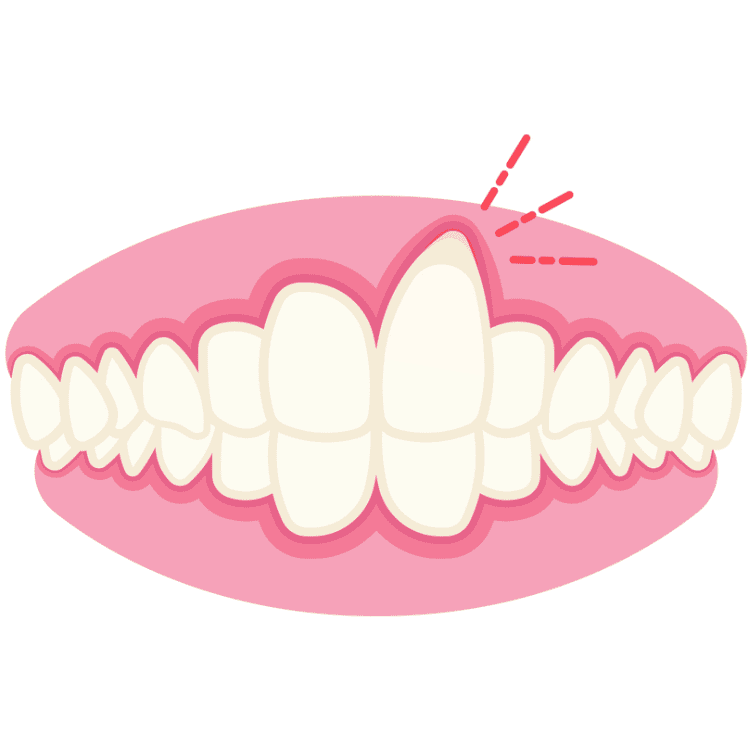
Myths About Gum Recession: Is It Related to Age?
Many people believe that gum recession only happens when you get older, but in reality, it may occur much earlier than you think.
Over 40 years old
Gum recession is most common in this group. As age increases, gum tissue and supporting bone gradually deteriorate. Combined with poor oral hygiene or long-term periodontal disease, gum recession becomes more pronounced.
Over 30 years old
Globally, about half of adults over 30 experience some degree of gum recession. In other words, it is not a rare condition but rather a very common oral health problem.
20s – younger population
Although less common, gum recession can still appear early if there is aggressive tooth brushing, teeth grinding, misaligned teeth, or genetically thinner gums.
👉 Gum recession is not simply a sign of aging. It is closely related to daily habits, periodontal health, bite pressure, and genetic factors. In other words, even young people should not take it lightly. If early symptoms such as receding gum margins, tooth sensitivity, or widening gaps between teeth appear, you should seek examination and correction immediately.
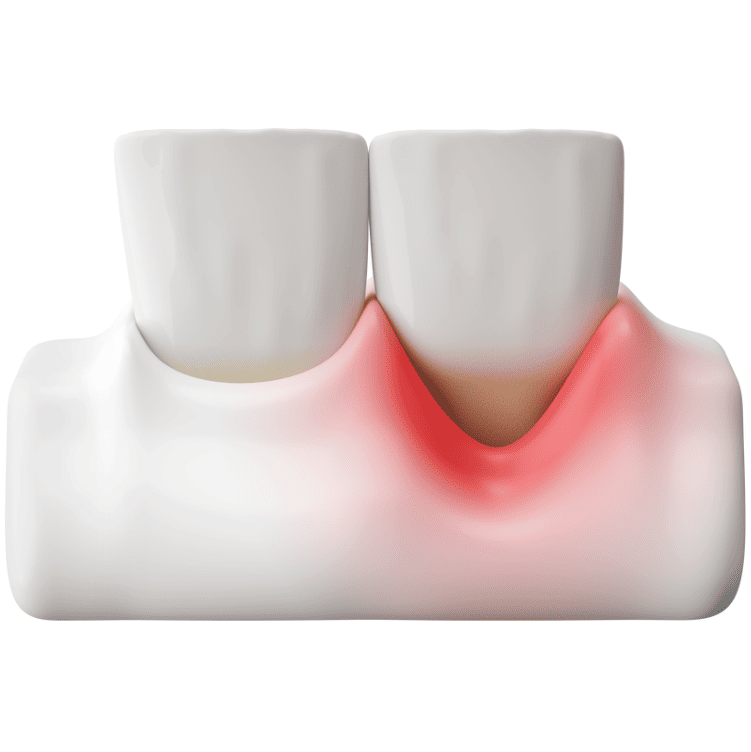
Signs and Symptoms of Gum Recession
Gum recession usually develops gradually and without obvious pain, which is why many people only notice it when the condition becomes more severe. By identifying the warning signs of gum recession early, you can seek treatment sooner, preventing worsening tooth sensitivity, periodontal disease, and even tooth loss.
Here are the common symptoms:
Tooth Sensitivity
After the roots are exposed, the dentin comes into direct contact with the external environment, causing noticeable sensitivity or sharp pain when consuming hot or cold drinks, sweets, or acidic foods.
Teeth Appear Longer
As the gum line gradually recedes, the visible length of the teeth increases, making them look “longer.” This is one of the most intuitive symptoms.
Exposed Roots / Gum Notches
You may see the darker-colored tooth root at the gum edge, or feel a notch or depression with your tongue. This not only affects appearance but also easily accumulates bacteria.
Swollen, Red, or Bleeding Gums
Repeated bleeding while brushing or flossing is a typical sign of gingivitis and early periodontal disease. If ignored, long-term inflammation will accelerate gum recession.
Persistent Bad Breath (Halitosis)
Periodontal pockets caused by gum recession easily accumulate bacteria and food debris, producing persistent bad odor that cannot be completely eliminated even after brushing.
Loose or Shifting Teeth
In advanced stages, the supporting strength of the alveolar bone decreases, which may cause teeth to loosen, tilt, or change bite alignment. This is a sign that periodontal disease has seriously affected tooth structure.
👉 Reminder: If you notice any of the above symptoms, it means your gum health is already at risk. Seeking dental consultation, oral examination, and treatment as early as possible can effectively prevent gum recession from worsening and protect your teeth from long-term damage.
Summary of Gum Recession Symptoms
| Symptom | Possible Cause | Severity |
|---|---|---|
| 🦷 Tooth Sensitivity | Exposed roots, exposed dentin | Mild to Moderate |
| 👀 Teeth Appear Longer | Gum line recedes, more crown exposed | Moderate |
| 🔍 Exposed Roots / Gum Notches | Gum tissue recession, darker root color, possible depressions | Moderate |
| 💢 Swollen, Red, or Bleeding Gums | Gingivitis, early periodontal disease, bacterial irritation | Mild to Moderate |
| 😮💨 Persistent Bad Breath (Halitosis) | Bacteria growth in periodontal pockets, food debris accumulation | Moderate |
| ⚠️ Loose or Shifting Teeth | Advanced periodontal disease, weakened alveolar bone support | Severe |
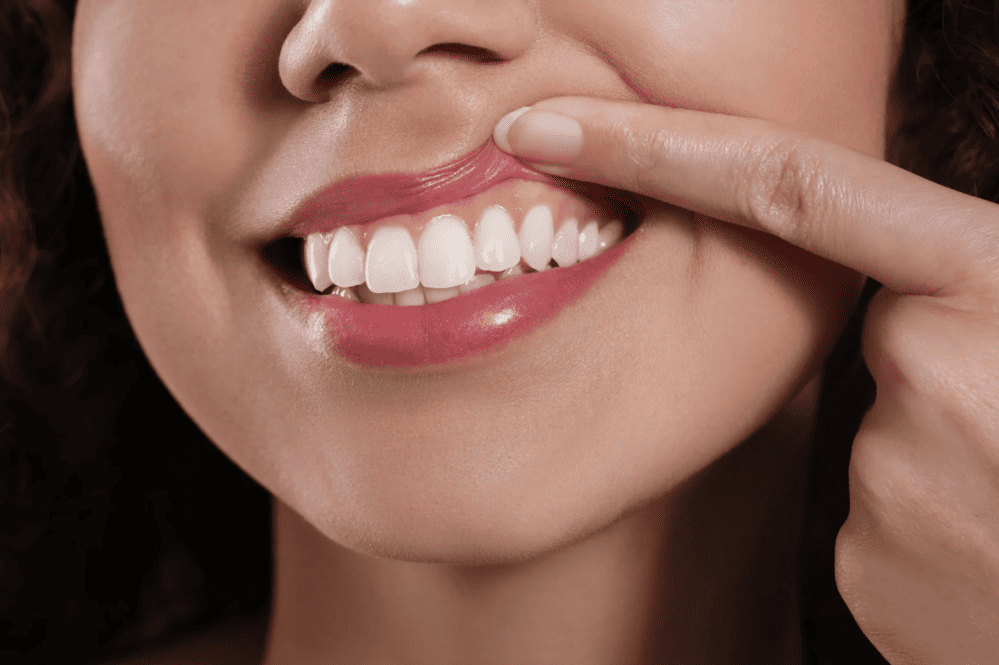
Can Gum Recession Be Reversed?
The question most patients are most concerned about is: “Will receding gums grow back on their own?” The clear answer is: No. Once gum tissue has receded, it cannot regenerate naturally on its own.
But the good news is that, through professional periodontal treatment and surgical methods, it is possible to effectively stop further deterioration, and in some cases restore gum coverage and function.
Treatment Options for Gum Recession: From Deep Cleaning to Advanced Surgery
Gum recession is not caused by a single factor, so treatment methods vary depending on the degree of recession, periodontal condition, and patient needs. The core goals of treatment are to stop the gums from further recession, improve gum and root protection, and restore oral function and aesthetics.
Dental clinics generally provide both non-surgical treatments and surgical treatments, offering the most suitable solutions for different stages of gum recession.
Non-Surgical Treatments (Suitable for Early to Moderate Stages)
These methods are for patients whose gum recession is not yet severe, aiming to control inflammation, reduce sensitivity, and promote gum health.
1. Scaling and Root Planing
- Removes plaque and tartar under the gums
- Smooths root surfaces to reduce bacterial adhesion
- Helps gums reattach firmly to the roots
2. Periodontal Treatment
- Suitable for early periodontal disease (gingivitis / mild periodontitis)
- Reduces inflammation and prevents further gum damage
- Combined with regular periodontal check-ups, effects are longer lasting
3. Desensitizing Treatment
- Uses special gels, fluoride coatings, or bonding agents
- Effectively reduces sensitivity caused by exposed roots
- Improves daily eating comfort
Surgical Treatments (Suitable for Moderate to Severe Stages)
When gum recession is more obvious and cannot be improved through non-surgical methods alone, a periodontal specialist may recommend surgical treatment.
1. Gum Graft Surgery
- Healthy gum tissue is taken from the palate or artificial tissue and grafted onto exposed roots
- Main benefits: reduce tooth sensitivity, restore gum line, protect tooth roots
- This is the most common and clinically reliable surgical method
2. Regenerative Therapy
- Suitable for patients with gum recession accompanied by bone loss
- Uses regenerative membranes, bone graft materials, or tissue-stimulating proteins to help regenerate bone and periodontal tissue
- Improves tooth support and reduces the risk of tooth loosening
3. Restorative Treatment
- Suitable for cases where gum recession has already led to tooth loss
- Options include: dental bridges, implants, or dentures
- Not only restores chewing function but also improves the aesthetics of the smile
👉 In summary, gum recession treatment is not a single model, but staged according to severity:
- Early Stage → Deep cleaning + desensitizing treatment
- Moderate Stage → Add periodontal treatment, and if necessary, small-scale gum graft
- Severe Stage → Regenerative therapy / graft surgery / dental implants or dentures
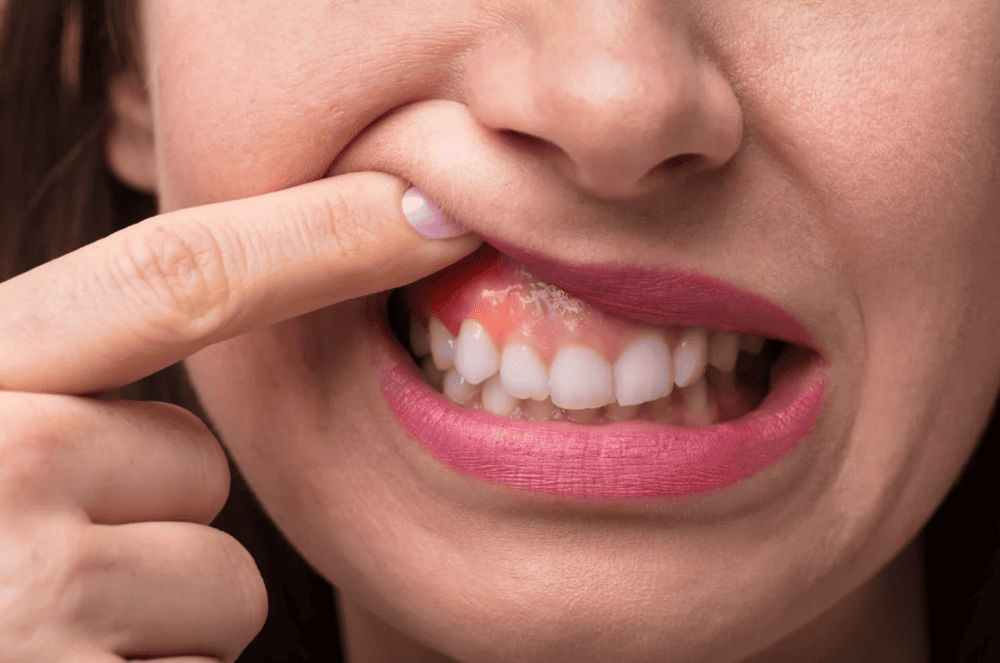
How to Prevent Gum Recession: Daily Oral Care at Home
With the right daily oral care, you can keep your gums healthy, strong, and well-protected.
✅ Gentle Brushing Technique
Use a soft-bristled toothbrush and brush with small circular motions. Avoid scrubbing back and forth with too much force, as this can wear down gum tissue.
✅ Daily Flossing or Interdental Brushes
Remove hidden plaque and food particles between teeth to maintain gum health.
✅ Regular Dental Check-Ups
Schedule professional cleanings and gum health exams every 6–12 months. High-risk individuals should consider check-ups every 3–6 months.
✅ Protect Against Nighttime Grinding
If you grind or clench your teeth at night, consult your dentist about a custom night guard to reduce pressure on teeth and gums.
✅ Healthy Lifestyle Habits
Maintain a balanced diet, limit sugar intake, and avoid excessive smoking or drinking to lower the risk of gum disease.
✅ Early Oral Care for Children
Encourage kids to develop good oral hygiene habits from an early age and ensure they receive regular pediatric dental check-ups.
Safeguard Your Oral Health
At Smith & Jain Dentists, we are committed to delivering professional dental care, from thorough oral examinations to tailored treatments designed for your unique needs. Our expert team provides compassionate guidance throughout your journey to a healthier mouth.
Why Choose Smith & Jain Dentists?
- ✅ Personalized Treatment Plans – Every patient’s oral condition is unique, and we craft targeted solutions to address your specific concerns.
- ✅ Advanced Dental Technology – Utilizing digital diagnostic tools, we ensure precise assessments and effective treatments.
- ✅ Experienced Specialist Team – With extensive expertise, we guarantee top-tier care and swift recovery.
💡 Take the First Step Toward a Pain-Free Mouth! Contact us today to begin your oral health transformation.
Conclusion: Protect Your Smile with Healthy Gums
Gum recession is not just a cosmetic issue — it is a major warning sign of periodontal disease. Without timely treatment, it can lead to tooth sensitivity, bone loss, and even tooth loss. The earlier you seek treatment, the better the long-term outcome.
👉 Don’t let gum recession steal your smile. With our professional dental team, you can protect both your gums and teeth.
Frequently Asked Questions About Gum Recession
Can gum recession heal on its own?
Unfortunately, no. While non-surgical treatments such as deep cleaning and periodontal therapy can control gum disease and ease symptoms, lost gum tissue cannot regenerate naturally.
Is gum graft surgery painful?
Thanks to modern techniques and local anesthesia, gum grafting is safe and relatively comfortable. Most patients experience only mild discomfort, and recovery is usually quick.
How much does gum recession treatment cost?
The cost depends on the severity of the recession and the type of treatment required. Professional deep cleaning may cost a few thousand HKD, while gum grafting surgery is more expensive. We recommend scheduling a consultation with your dentist to receive a personalized estimate.
How often should I have my gums checked?
For most people, a check-up every 6–12 months is sufficient.
High-risk patients (such as those with a history of periodontal disease, smokers, or people with diabetes) may need a check-up every 3–6 months.
What is the fastest way to stop gum recession?
The quickest step is to visit your dentist for a professional cleaning and gum health assessment.
At home, you can slow progression by switching to gentle brushing techniques, flossing daily, and avoiding habits like smoking or teeth grinding.
Can gum recession cause tooth loss?
Not necessarily. In the early stages, gum recession can be controlled with professional care and proper home hygiene.
However, if advanced periodontal disease is left untreated, it may lead to tooth loosening or even tooth loss.
Is gum graft surgery permanent?
In most cases, gum grafts can successfully cover and protect exposed roots for many years.
Long-term success depends on maintaining good oral hygiene and scheduling regular dental check-ups.
Disclaimer
All information provided on this website is for informational purposes only and is intended to help readers gain general knowledge about dental health. The content on this website should not be considered a substitute for professional dental diagnosis, advice, or treatment. If you have any dental concerns, please consult a licensed dentist for appropriate medical advice and treatment. Smith & Jain Dentists and its affiliates are not responsible for any direct or indirect damages resulting from the use of this website’s information. This website may include links to external websites for reference purposes only. Smith & Jain Dentists is not responsible for the content or accuracy of third-party websites.



